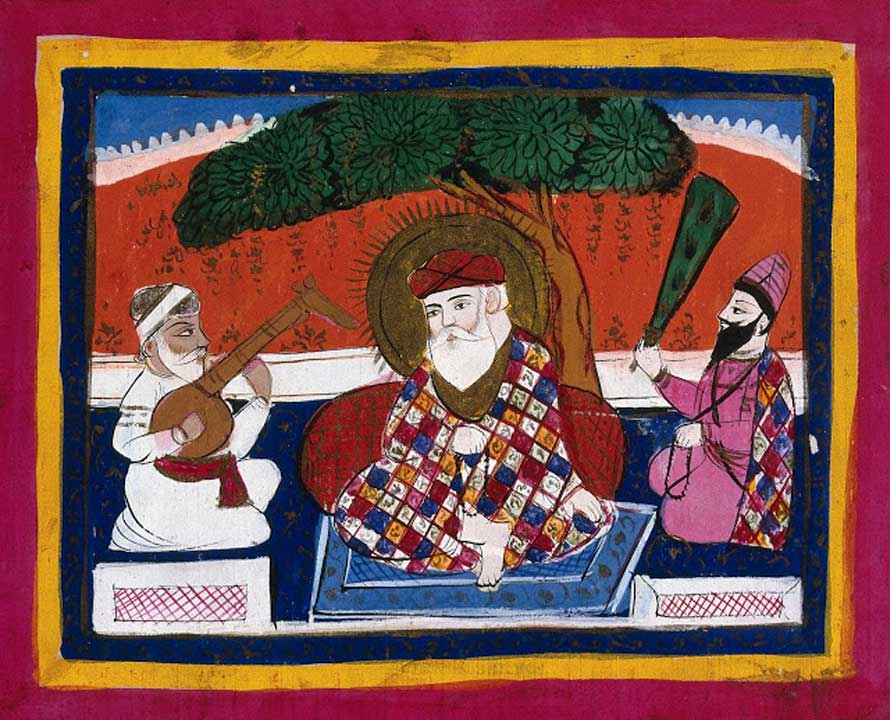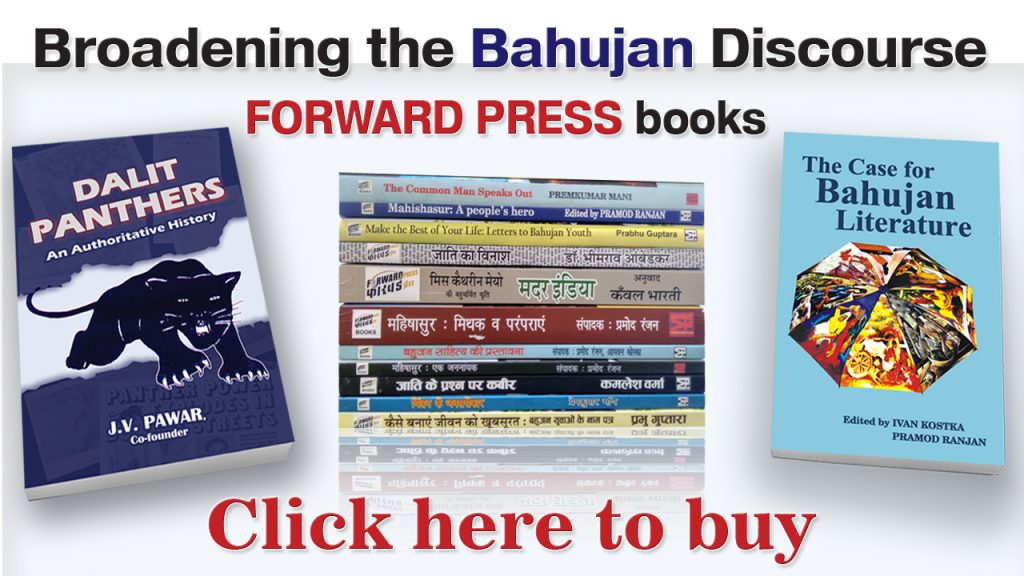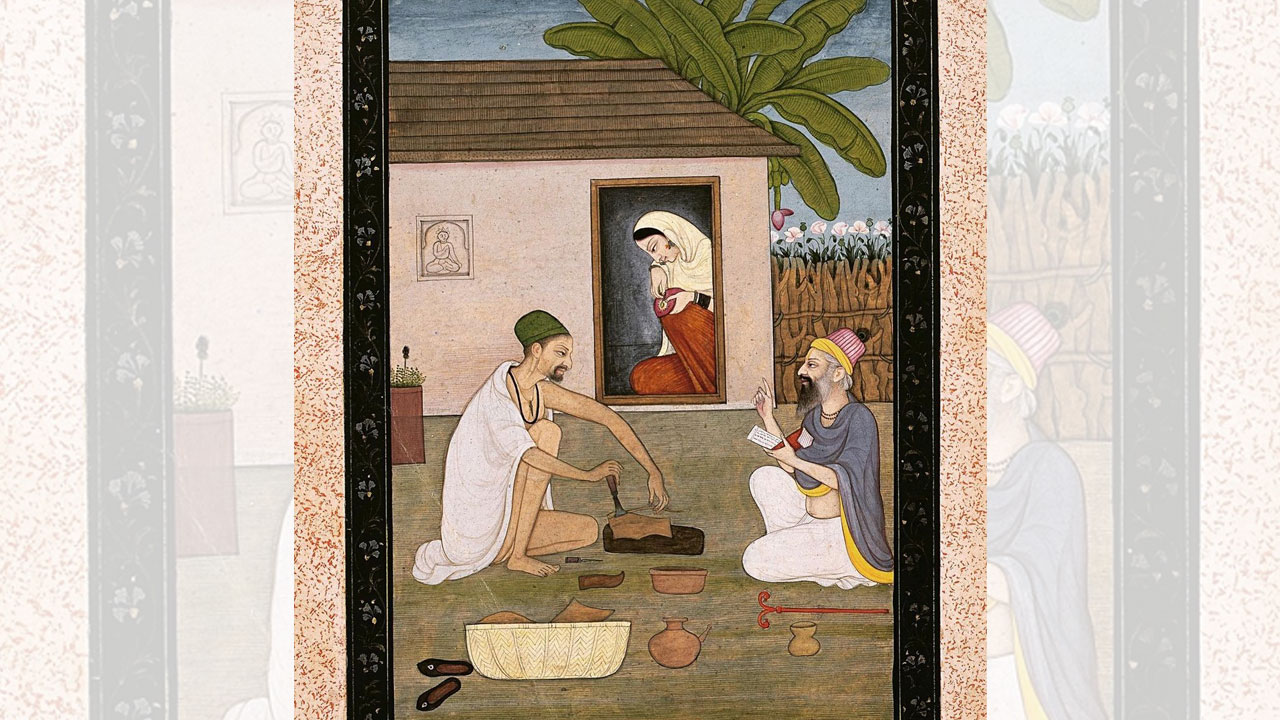This article talks about the social boundaries that have existed in Indian society for more than 3,000 years, reducing most of the people to lesser beings. It discusses how religion used politics, and politics used religion. Varnas came into being first, followed by castes. This took around 1,300 years. The scriptures are very clear in that whosoever works with his hands is a Shudra. The caste system still survives and is a social evil.
Religion plays a key role in the making of the Indian social system. Along with religion, complexities generated by the intermingling of caste and politics is what further makes its decipherment even more challenging. Caste and religion are so inextricably linked to each other that they have become almost complementary in their day-to-day connotations. Religion manifests itself in the social status of people rather than in their conduct. The kind of influence religion and caste have on politics leads one to wonder whether it is the religionization/casteization of politics or the politicization of religion and caste. The adulators of religion and caste blame politics for their internal weaknesses. The politicians, on the other hand, never tire of stressing that religion and caste blocked their progress in politics. An attempt to understand religion, caste and politics separately does not take us to any concrete conclusion because the three have got so indistinguishably mixed that studying them individually would deprive us of comprehending their real nature (Kothari 1985).
Every religion and caste has its own identity, ideas and lifestyle. And each one of them tries to glorify what is theirs. Scholars often consider society as a single entity and analyze the religions and castes as distinct units within it. It is a fact that politics is neither being practised only by politicians nor is it the sole occupation of politicians. Members of different castes and followers of different religions play politics both wittingly and unwittingly to maintain their status. This happens because of the mixing of religion and caste. Caste, along with religion, does not only build a new identity but also determines social status. The attempts of the upper castes to perpetuate the stratified hierarchy and the struggle against such attempts by those relegated to unjust status give birth to organizations that are centred on politics. In such a scenario, it is difficult to determine whether religion is responsible for pushing politics in a particular direction or caste is deploying religion to serve its interests. It is not easy to categorically answer the question whether religion influences politics or vice-versa.
Before trying to understand the interplay of religion, caste and politics, we need to develop a fresh understanding of religion and caste. First, let us try to understand religion. We will dwell on its relationship with caste and politics later. One more issue, which needs our attention here, is that of Varna. Scriptures say that a person’s Varna comes first and then his religion. They locate the origin of religion in the Vedas. The Vedas are supposed to have been articulated sometime between 3500 BCE and 1500 BCE. This also happens to be the period when Aryans arrived in India. There is no doubt that the concept of Varna predated that of caste by about 1,300 years. In the tangled tale of the metamorphosis of the Varna system into the caste system is hidden the emergence of politics. Therefore, to understand politics, we need to understand religion and Varna. This will help us critically analyze the complex structure of caste and its deep connections with politics (Altekar 1962; Bandyopadhaya, 1927).
Varna and religion
We will take the help of the scriptures to understand Varna and religion. The scriptures are an amalgamation of two different knowledge sources – Dharmasutras and Smritis. “Sutra” means expressing knowledge about something in a limited number of words. It is believed that Vedas existed in the oral tradition well before they appeared in the written word. These were called Smritis. Clearly, memorizing the entire text with its complicated interpretations was a tall order. That was why the Vedas were committed to memory in the form of Sutras. That explains the origin of names like Vedi, Dwivedi, Trivedi, Chaturvedi, etc. That is why the Vedas are interpreted in the form of Sutras. That was how Sutra literature came into being (for more details, see Ghoshal 1959).
Though Vedas do not systematically define the rules of life, the basic source material of such rules can be located within the Vedas. Norms related to marriage, different kinds of sons and inheritance, detailed in the scriptures, are derived from the Vedic literature. Many key writers of Dharmasutras, including Gautama, Apastamba, Vashistha, Manu and Yajnavalkya, agree that the Vedas are the real wellspring of dharma (Yajnavalkya is among the Vedic scholars credited with having written the Yajur Veda). Dharmasutras and Smritis both exist as sutras. While the Dharmasutras are made up of commentaries, the Smritis include both commentaries as well as verses. Both are written in ancient language, though the language of the Dharmasutras is older than that of the Smritis. Compared to Smritis, the Dharmasutras don’t emphasize observational technique or making a systematic presentation of the subject matter. In fact, the writers of the Dharmasutras, especially the leading ones, do not present themselves as religious-minded or as great rishis (for details, see Kane 1930-35). But the writers of the Smritis, especially Manu and Yajnavalkya, declare that the knowledge preserved in these texts is “revealed” or divinely ordained. This “divinity” is the mask for politics. It is used to justify the one-sided division of society (Banerjee 1980).
Smritis came after the Dharmasutras. That the Smritis are ancient is undeniable. Dividing them into two separate categories would help us study them in detail. We can define them in either broad or narrow terms. In broad terms, Smritis include the entire corpus of ancient literature other than the Vedas, for instance the works of Kalp and Yajnavalkya. In narrow terms, Smritis are considered complementary to the Dharmasutras. Manu believes so. Rishi Vashistha and Gautam also consider Smritis as important texts for analyzing religion. From this perspective, there remains no difference between Dharmasutras and Smritis. Rishi Gautam, one of the important early writers of the Dharmasutras, calls himself Dharmasutrakaar and Manu the Smritikaar. Rishi Vashitha also considers himself a Smritikaar along with Gautama, Prajapati, Yama, Harita and Manu. Besides Dharmasutras and Smritis, the Puranas also talk about religion. The Puranas are also ancient – they find mention in Chandogya Upanishad and Gautama Dharma Sutra. Some scholars argue that the Puranic literature caught the imagination of the people after Buddhism and Jainism faded and Brahmanism started reasserting itself. There are 18 Puranas. Among them, the Matsya Purana dwells on religion, especially about the rituals related to Shradha, Vrata and Rajdharma, etc. The Puranas detail the nitya (daily) and naimittika (performed on special occasions) rituals as well as the Varnashram system. As far as the popular interpretations of religion are concerned, Yajnavalkya Smriti comes next after the Manusmriti. The Brihadaranyaka Upanishad presents Yajnavalkya as a great philosopher who imparted knowledge about Brahma while listing the principles that determine immoral conduct (Banerjee 1980).
Based on the interpretation of Dharma in these sources, Medhātithi, a scholar and the writer of one of the key commentaries on Manusmriti, divides Dharma into five parts. They are Varna Dharma (related to the four Varnas – Brahmin, Kshatriya, Vaishya and Shudra), Ashram Dharma (related to the four Ashrams – Brahmacharya, Grihastha, Vanaprastha and Sanyasa), Varnashram Dharma (duties of members of the different Varnas during the different Ashrams), Naimittik Dharma (related to mandatory duties such as atonement on special occasions in life) and Guna Dharma (for instance, the duties of a king towards his subjects). According to this classification, Dharma is mainly about one’s duties as members of different Varnas in different Ashrams of life and with reference to the caste system. The duties of people of all castes in all stages of their lives are predetermined. The duties are a function of one’s caste. The duties of different castes are based on their status in society. Performing these prescribed duties is Dharma. Thus, Dharma has nothing to do with worshipping god or philosophical speculations about the nature of god. It is about who is allowed to worship god and who is not. In other words, following religion means sticking to the prescribed norms and carrying out one’s duties laid out in the norms (Ambedkar 1995).
Kabir expresses this in the following words:
Ved ki putri smriti bhayee / Sankal, jevri lai hai aye |1|
Aapan nagru aap te baadhia / Moh kai phadi kaal saru sandhia ||1|| rahau //
Kati n katai tuti nah jayee // Sa saapni hoyee jag ko khayee ||2||
Ham dekhat jinni sabhu jag lutia // Kahu Kabir main Ram kahi shuteia // (Guru Granth Sahib, p 327)
What Kabir is saying here is that the Smritis, based on the Vedas, are in shackles of Varnashram and rituals. Those who believe in the Smritis cannot hope to break free from the norms prescribed in them. Comparing Smritis with a Nagin (female snake), which eats up its own offspring, Kabir says that the rules and the norms prescribed in the Smritis, corrupt (dirty) the minds of those who believe in them. This Bani shows that Smritis are about the social structure and social life based on the Varnashram system and have nothing whatsoever to do with spirituality. Guru Arjun Dev, in his Bani, writes about Smritis:
Smriti Bed Puran pukarini pothia //
Naam bina sabhi kudu gaahli hochia ||1|| (Guru Granth Sahib, p 761)
The men who on reading Vedas, Puranas, Smritis and other religious scriptures, relegate spiritual knowledge to the margins and publicize rituals, talk nonsense. Except for the name of the almighty, all this is fake and hypocritical. Similarly, Guru Amardas, in his Bani, says
Padi padi pandit jotki thake bhekhi bharmi bhulaye //
Guru bhete sahju payeea aapni kirpa kare rajai ||1|| (Guru Granth Sahib, p 68)
What it means is that pandits, astrologers and sadhus who wear different attires – all are treading the wrong path after reading the Shastras and other religious books. This is the reason they have been unsuccessful in attaining the “sahaj” state. Those who receive the blessings of the almighty achieve “sahaj” state and acquire true knowledge through their guru.
Padi padi pandit moni thake chauthe pad kee saar n paavnia //5//
Aape range rangu chadaye// (Guru Granth Sahib p 117)
The above verse says that the pandits and the learned get exhausted reading Vedas and other religious books but are unable to attain the spiritual state.
Baba Nanak offers a solution to the Gordian knot of Varna, caste and religion. He says that the flame of the almighty burns inside the persons of all castes.
Janahu joti na puchau jati aage jati n he rahau ||1|| (Guru Granth Sahib p 347)
It would be pertinent to mention here that in the scriptures, Varna and caste are used as synonyms, which comes in the way of developing a correct understanding of caste. As we said at the beginning, about 1,300 years separated the emergence of the concepts of Varna and caste. The four Varnas (Brahmin, Kshatriya, Vaishya and Shudra) were defined on the basis of not birth but occupation. But as the caste system emerged as an offshoot of the Varna system, occupation was replaced by birth as the basis of categorization. Religion was used to lend legitimacy to this shift from occupation-based Varna system to birth-based caste system. At the time of the writing of the Vedas and Dharmashastras, religion was seen as a means for ensuring that the different sections of society perform their duties. Later, duty yielded a place to social status. Duty was linked to karma. But it was later linked to religion, making it a hurdle on the path to social consciousness. I believe that all this became possible due to politics. Hence, to understand politics, we need to understand how religion, varna and caste are related to one another.

Before discussing the mutual relationship between religion and caste, we need to discuss how Varna became caste and in the process, politics tightened grip on society. No doubt this question has been much discussed but it is yet to find mention in Punjabi literature. Male-dominated society, class divisions and the State played a key role in the transformation of the institution of Varna into the institution of caste. Caste system did not come into being in the entire subcontinent at one time. In a given period, it was at different stages of evolution in different regions. Male domination, established by implementing Sagotra marriage, along with business exigencies, status-based social structure and atrocities against women, shaped a caste-based society. Astonishingly, the same factors operate in Indian society even today in one form or the other and that is why we are not able to break free from the stranglehold of caste.
Some scholars assert that the Vedic priestly class problematized the natural changes in women’s bodies and the women were ostracized from Vedic rituals. Branding menstruation, which is a biological process, as something that makes women impure is a gross misdeed rooted in male chauvinist thinking. Early literature shows that many Indian tribes did not consider menstruating women impure prior to their association with caste-based society. Thus, we can conclude that the status of women vis-à-vis men was lowered during the transition from the Varna system to the caste system. It would be logical to conclude that the casteist social order was responsible for demeaning women. Dr Ambedkar has dwelt on this issue in his first research paper “Castes in India: Their Mechanism, Genesis and Development”, which he wrote as a student of Columbia University. He writes that this attitude to women cannot be understood without first understanding the concepts of Sagotra and exogamous marriages. In his paper, he contends that male domination and subjugation of women were key factors that shaped caste-based society (Ambedkar 1917).
Sagotra marriage
As regards the theory of exogamous marriages, sociologists have widely divergent views on it. S.V. Karandikar (1950), Irawati Karve (1966) and G.S. Ghurye (1972) say that the Aryans were not acquainted with the principle of marrying outside the gotra (clan) before their arrival in India and their interaction with the indigenous people (Kosambi, 1956; Habib, 1995; Habib, 1985). In contrast, well-known scholars like Benveniste and John Brough argue that the theory of Sagotra marriage had been formulated during the time of the Rig Veda. They also believe that the brahmanical theory of Gotra-Sagotra marriages emerged from the interaction between the Indian tribes and the Indo-Europeans. Be that as it may, Sagotra marriage became one of the foundations of a caste-based society. The Rig Veda refers to the tradition of women leaving their own family to live with their in-laws after marriage. The word “junj” (procession of the bridegroom in a wedding) evolved, according to some scholars, from the word “jana” (relatives). The Atharva Veda says that the groom belongs to a family different from that of the bride’s. The groom and the bride belong to different “janas”. The word “jana” thus symbolizes marriages outside the gotra. According to Indologist Heesterman, “janyamitra” means someone related by marriage. Winding up this discussion, we can say that the concepts of Sagotra marriage and marriage outside the Varna, relegated women to a secondary position and played a key role in strengthening the caste system (Jaiswal). The word “Rajan” evolved in the Rig Vedic era and finds mention in the Purushsukta. The Brahmans, which figure in the later Vedic literature, distinguish between the Brahmins and the Kshatriyas. Brahmanical norms and rituals, especially the Yagyopaveet Sanskara, contributed immensely to the building of caste-based society. Ram Sharan Sharma says that Yagyopaveet Sanskara deepened the caste system. By the end of the later Vedic period, the Varna system had come into being. By that time, the institution of caste had developed three distinct characteristics: 1) Graded hierarchy. 2) Expertise in hereditary occupation and 3) Sagotra marriage. According to the Baudhayan Dharmasutra, the Brahmin clan was shown evolving from within the different kinds of sub-clan families in a systematic way. In the Satapatha Brahmana it is mentioned that a Kshatriya is born of Kshatriya, a Vaishya is born of a Vaishya and a Shudra is born of a Shudra (Jaiswal 2000). In his treatise, Rishi Patanjali talks about Varna changing into caste.
On the basis of the above discussion, it can be said that the caste-based society emerged from the subdivision of the Varna system and inclusion of new clans and tribes in it. Institutional and ideological foundations of the Varna theory were used to promote the evolution of caste-based society. Some scholars also believe that the clashes between Aryan clans, their confrontation with the indigenous inhabitants and the attempts by the Aryans to subjugate the indigenous inhabitants also contributed to the development of caste-based society. The Varna system lost its flexibility towards the end of the Vedic era and became concrete divisions. Laying down the norms of the caste system, Rishi Patanjali writes that metal utensils used by Shudras, who are not outcastes (namely Gandikas, Shakas, Yavanas) can be purified in fire but the utensils used by outcaste Shudras (Chandals and Martapas), who carry the dead to the funeral grounds and washed their clothes cannot be purified (Jaiswal 2000). Later literature lays down detailed norms regarding ranking of Shudras.
Theory of the divine will
In the eyes of the conservative Brahmin, everyone other than them belongs to the margins and is a Shudra. They believe that one’s caste identity determines one’s occupation and caste. The transformation of the Varna system into the caste system was achieved by invoking divine ordainments. The way the theory of divine sanction was used to justify the fragmentation of society into four Varnas and innumerable castes and stripping a majority of Hindus of their human rights smacks of political skullduggery. It was declared that a person’s birth as a Brahmin, Kshatriya, Vaishya or Shudra was god’s will. This was done to perpetuate the unjust social order. There was politics behind it. The objective was to enable the three upper Varnas to live off the toil of the majority Shudras. Another objective was to convince the Shudras that they are born to serve and that by their service, they would compensate for the sins committed by them in their previous births and thus attain salvation. A critical study of the Varna system would reveal that linking the hierarchical social order with divine will not only hid its inherently unjust nature but also to present it as a system meant for achieving the common good. The supporters of the system of four Varnas argue that it gave rise to specialization of varied professional occupations, which eventually led to prosperity in society. It is also argued that the caste system is a distorted form of the Varna system and if once it is purged of the element of hatred, it can be used as a constructive tool for social welfare. But that doesn’t seem to be happening. Assuming that the Vedic age began around 1,500 BCE, the caste system is at least 3,750 years old and despite the passage of such a long time, there is nothing to show that this inhuman system of graded inequality is coming to an end.
The transition from the varna system to the caste system was made riding piggyback on religion. Religion is about norms, principles, customs, traditions, morality and the rules of behaviour and conduct. It is often presented as a set of rules and theories, which regulate the conduct of human beings as individuals and as members of society and a community. The realm of religion is so vast that it covers all activities of humans and human society and its different sections. Religious norms are also used to decide what is right and what is wrong. The scriptures link religion with your duties. Dharma or duty is another name for perpetuating the Varna system and the caste-based society. One who follows the religion is expected not to transgress the boundaries set for him and which, in turn, are determined by his Varna. Violation of the restrictions imposed by the Varna and caste system is considered a violation of religion.
Who benefits, who loses
The next question is who benefits and who suffers by adhering to scriptural stipulations. Clearly, the Varna and caste system favours the three upper Varnas. Nothing except serving others and enduring exploitation has been reserved for the lowest Varna – the Shudras. The above question can be answered easily if one considers who the Shudras are, what is their proportion in our society and what is their condition. Shudras include all people who work with their hands. As for the three upper varnas, they work as public administrators, advisers to the rulers, protectors of the state and businessmen and traders. The administrators and the advisers wield the pen and the businessmen use balances and scales. But they are not part of the productive class. It is Shudras who are the producers. Those among the Shudras who were assigned the work of cleaning human excreta, disposing of dead cattle and sanitation were known as Ati-shudras or untouchables. They have been listed as Scheduled Castes in the Indian Constitution. The Shudras and the Ati-Shudras constitute almost 85 per cent of the population. The three upper Varnas form the remaining 15 per cent. Questioning the lower status accorded to 85 per cent people vis-a-vis 15 per cent is considered pointing fingers at religion. All this, when closely studied, indicates the close relationship between religion, caste and politics. The scriptures do not link religion with morality but only proclaim what is right and what is wrong. And the rightness or wrongness of an act is decided on the basis of pre-determined norms. Adherence to these norms is considered good and proper and their violation is considered wrongful conduct. Morality is not about norms. It is about principles. Norms only tell us what is right and wrong – what should be done and how. The norms laid down by the Dharmasutras and the Smritis expect Hindus to adhere to them. Norms and rules only make men obedient while principles develop creativity and purity in them. Norms and rules only stipulate your conduct. Principles are about accountability and freedom. Therefore, religion should relate to principles not to rules. Dr Ambedkar believes that a principle may be wrong but what is done in accordance with it may be fruitful. Similarly, a rule might be right but what is done in pursuance of it may be wrong. Rules demand obedience. Principles have to do with a person’s conscience and they force a person to differentiate between right and wrong. The norms laid down in the scriptures do not help us to identify what is right or wrong. They simply ask us to adhere to the rules related to the Varna and caste system.
When a religion is assessed from the perspective of its norms, it has no connection with spiritual/moral values and is only about what should be done and what should not be done – that is, rules and regulations. The above-mentioned rules and norms patronize Varna and caste-based systems and fix the social and economic roles of various castes. For instance, a cobbler’s son will be a cobbler and his specific occupation of making/mending shoes will determine his social status. Such a inhuman policy of discrimination has not only divided people on the basis of their social status but also adversely affected the feeling of fraternity, which is the soul of any society. Any talk of philanthropy in a caste-based society remains confined to a particular caste. For instance, different communities construct institutions and facilities – for example, dharamshalas, for the convenience of the members of their community only. This gives birth to a kind of politics, which does not bind society but disintegrates it. Thus, religion and politics are two sides of the same coin. A caste-based society has been able to sustain itself with the support of the rules prescribed by scriptures. These rules are no longer just rules. They have taken the place of religion. These rules are used to stop the untouchable community from entering places of worship. While Shudras and the Atishudras are considered a part of Hindu society, they are not allowed to participate in the religious affairs of their own community. If the Untouchables are getting drawn to Islam, Christianity and Sikhism, it is because they are oppressed. Untouchable Hindus embracing other religions only deepens casteist politics. Caste tensions turn into communal tensions. Love jihad, for example, becomes the talking point.
Many religious, social and political movements arose from time to time in opposition to the social evils traceable to the Varna and Caste system. Many of such movements were initiated by the Atishudra castes. Among all these, the contribution of the Bhakti movement has been very important. The Bhakti movement began from the 7th century in south India and became very powerful in north India in the 15th century. The teachings of Kabir and Raidas seek to free man from the tangles of caste and teach them real spiritual religion. The Bhakti movement’s origins were in the resistance to the religion based on scriptures and the politics born out of it.
The Sikh philosophy enunciated by the Gurus was a concrete step in the direction of the building of a society free from caste boundaries and based on principles of egalitarianism and universal brotherhood. The philosophy of the Gurus is not merely theoretical. It establishes a new society, the foundation of which was laid by Baba Nanak at Kartarpur. Baba Nanak’s Bani – “Neecha andar neech jati neechi hu ati neech // Nank tin kai sangi sathi vandiyan sio kiya rees // Jithe neech samalian tithei nadri teri baksees” – exposes the real face of the caste-based society. In his Bani, Nanak says that the way to god is not rituals and worship. God’s blessings can be obtained by embracing the large section of society that was oppressed for centuries. The maturity of his path is evident in the line “jithe neech samalian tithai nadri teri baksis”. Baba Nanak’s Bani and his philosophy based on equality was the foundation on which, during the time of Guru Gobind Singh, a society was built in which there was no place for caste and men and women were equal. This philosophy does not allow the use of religion as the basis for politics. The emergence of Deras, within the Sikh society, based on caste, is an indication of politics infiltrating the Panth. It is politics, which precludes the manifestation of the real nature of a religion. If a religion has something that promotes politics, then both the religion and the politics turn out to be ruinous. So, it is very difficult to arrive at a fair conclusion regarding the mutual relations between Varna, religion, caste and politics. This article is a small attempt in that direction. A deeper and more extensive study is needed to explore it fully.
References
Altekar, A.S., State and Government in Ancient India, Patna, 1962.
Ambedkar, B.R., Castes in India: Their Mechanism, Genesis and Development, Indian Antiquary, Vol XLI, May 1917.
Ambedkar, B.R., Annihilation of Caste, Jalandhar, 1995 (originally published 1936).
Bandyopadhaya, N.C., Development of Hindu Polity and Political Theories: Part I, Calcutta, 1927.
Banerjee, Nikunja Vihari, Studies in the Dharmasastra of Manu, New Delhi, 1980.
Benveniste, Emile, Indo-European Language and Society, London, 1973.
Brough, John, The Early Brahmanical System of Gotra and Pravara: A Translation Gotra-Pravara-Manjari of Purusottama Pandita with an Introduction, Cambridge, 1953.
Ghurye, G.S., Two Brahmanical Institutions: Gotra and Charana, Mumbai, 1972.
Habib, Irfan, Interpreting Indian History, Shillong, 1985.
Habib, Irfan, Essays in Indian History, Towards a Marxist Perspective, Delhi, 1995.
Heesterman, J.C., The Ancient Indian Royal Consecration, The Hague, 1957.
Karandikar, S.V., Hindu Exogamy, Mumbai, 1928.
Jaiswal, Suvira, “Studies in Early Indian Social History: Trends and Possibilities,” The Indian Historical Review, Vol VI, No 1-2, July 1979-January 1980, pp 1-63.
Jaiswal, Suvira, Caste: Origin, Function and Dimensions of Change, New Delhi, 2000.
Kane, P.V., History of Dharmasastra, Vol I-IV, Pune, 1930-35.
Karve, Irawati, Kinship Organization in India, 3rd edition, Mumbai, 1966.
Kosambi, D.D., An Introduction to the Study of Indian History, Mumbai, 1956.
Kothari, Rajni (ed), Caste in Indian Politics, New Delhi, 1985.
(Translation from Hindi to English: Amrish Herdenia; copy-editing: Anil)
Forward Press also publishes books on Bahujan issues. Forward Press Books sheds light on the widespread problems as well as the finer aspects of Bahujan (Dalit, OBC, Adivasi, Nomadic, Pasmanda) society, culture, literature and politics. Contact us for a list of FP Books’ titles and to order. Mobile: +917827427311, Email: info@forwardmagazine.in)
The titles from Forward Press Books are also available on Kindle and these e-books cost less than their print versions. Browse and buy:
The Case for Bahujan Literature
Dalit Panthers: An Authoritative History






